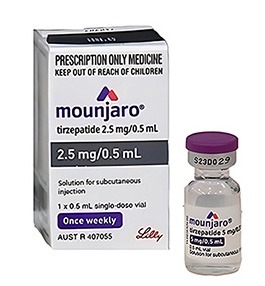Introduction
Mounjaro, also known as tirzepatide, has emerged as a beacon of hope in the treatment landscape for type 2 diabetes since its approval by the Food and Drug Administration (FDA) in 2022. This innovative medication offers effective blood sugar control, but like all pharmaceutical interventions, it comes with a spectrum of potential side effects. In this comprehensive exploration, we delve into both the common and rare side effects associated with Mounjaro, shedding light on its safety profile for individuals navigating diabetes management.
Understanding Mounjaro
Before delving into its safety profile, let's understand what Mounjaro is and how it works. Mounjaro belongs to a class of medications called glucagon-like peptide-1 receptor agonists (GLP-1 RAs). It works by mimicking the action of a naturally occurring hormone in the body called GLP-1. By stimulating the release of insulin and inhibiting the release of glucagon, Mounjaro helps lower blood sugar levels. Additionally, it slows down the emptying of the stomach, reducing postprandial glucose excursions and promoting satiety, which can aid in weight management—a significant concern for many individuals with type 2 diabetes.
Common Side Effects
As with any medication, there are common side effects associated with Mounjaro. These side effects are typically mild to moderate in nature and tend to improve over time as the body adjusts to the medication. Common side effects of Mounjaro may include:
-
Nausea and Vomiting: Some individuals may experience nausea and vomiting, particularly when initiating treatment or increasing the dose of Mounjaro. This side effect usually diminishes with continued use but can be managed by taking the medication with food or adjusting the dosage.
-
Diarrhea: Mounjaro can occasionally cause diarrhea, which may be bothersome for some individuals. Staying hydrated and consuming a balanced diet can help alleviate this side effect. If diarrhea persists or becomes severe, consulting a healthcare provider is recommended.
-
Hypoglycemia: Although less common compared to some other diabetes medications like insulin or sulfonylureas, Mounjaro can still cause hypoglycemia, especially when used in combination with other blood sugar-lowering agents. Symptoms of hypoglycemia include sweating, trembling, confusion, and palpitations. It's essential for individuals taking Mounjaro to monitor their blood sugar levels regularly and be aware of the signs of low blood sugar.
-
Injection Site Reactions: Mounjaro is administered via subcutaneous injection, and injection site reactions such as redness, swelling, or itching may occur. Rotating injection sites and proper injection technique can help minimize these reactions.
Rare Side Effects
While the common side effects of Mounjaro are generally well-tolerated and manageable, there are also rare but potentially serious side effects that individuals should be aware of. Although these side effects occur infrequently, they warrant attention and prompt medical evaluation if experienced. Rare side effects of Mounjaro may include:
-
Pancreatitis: In rare cases, Mounjaro can cause inflammation of the pancreas, known as pancreatitis. Symptoms of pancreatitis include severe abdominal pain that may radiate to the back, nausea, vomiting, and fever. Prompt medical attention is crucial if pancreatitis is suspected.
-
Thyroid Tumors: Studies in animals have shown an increased risk of thyroid tumors with long-term use of GLP-1 RAs, although the relevance of this finding to humans is uncertain. Individuals with a history of thyroid cancer or other thyroid conditions should exercise caution and discuss the potential risks with their healthcare provider.
-
Acute Kidney Injury: There have been rare reports of acute kidney injury associated with the use of Mounjaro. Individuals with pre-existing kidney disease or those at risk for kidney problems should be closely monitored while taking this medication.
-
Allergic Reactions: Although rare, some individuals may experience allergic reactions to Mounjaro, characterized by symptoms such as rash, itching, swelling of the face or throat, and difficulty breathing. Immediate medical attention is necessary if an allergic reaction occurs.

Conclusion
In conclusion, Mounjaro, or tirzepatide, offers a promising treatment option for individuals with type 2 diabetes, providing effective blood sugar control and potential benefits for weight management. While the common Mounjaro side effects are generally mild and transient, individuals should be aware of the rare but serious side effects associated with this medication. Open communication with healthcare providers, diligent monitoring of symptoms, and adherence to prescribed treatment regimens are essential for maximizing the benefits of Mounjaro while minimizing the risks. By staying informed and proactive, individuals can make empowered decisions about their diabetes management journey with Mounjaro.
Through this exploration of its safety profile, we aim to equip individuals and healthcare professionals with the knowledge needed to navigate the complexities of diabetes treatment effectively, fostering improved outcomes and enhanced quality of life for those living with type 2 diabetes.


No comments yet